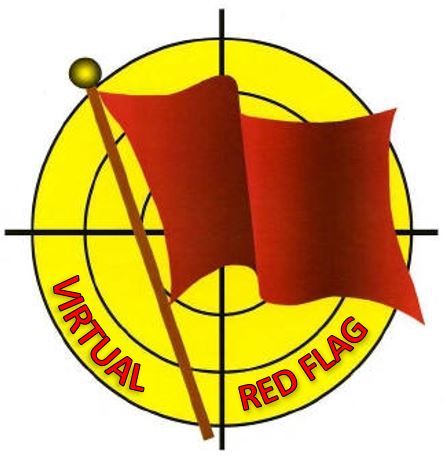VIRTUAL RED FLAG: LOCAL PROCEDURES
VER 1.2 MARCH 2020
TABLE OF CONTENTS
1. START-UP
All participants will start up engines stick to each type of aircraft normal procedures. Normally will use this radio setting procedure for ground, taxi, departure/approach and interflight COMMS. All platforms should adhere to the following PRESET plan:
● ATIS: PRESET #7 270.0 UHF, for last weather information updates.
● BASE OPS: PRESET #1 251.0 UHF for initial check-in
● GND: PRESET #2 327.0 UHF, for ground control if available.
● TWR: PRESET #3 327.0 UHF/132.55 VHF for ATC control.
● AWACS TACTICAL: PRESET #6 229.0 UHF for GCI control
● ARCO (SOUTHERN TANKER KC-135MPRS): PRESET #13, FREQ. according to COMMCARD
● TEXACO (NORTHERN TANKER KC-135): PRESET #14 FREQ. according to COMMCARD
● INTERFLIGHT: PRESET VHF #X, according to the assigned frequency in the COMMCARD
All formations will request weather info on ATIS 270.000. If ground control is available, Taxi will be requested in GND frequency. Otherwise, TWR frequency will be used for taxi and departure.
2. TAXI
Once ready for taxi each formation will ask GND (or TWR) for taxing to the active, normally RWY 03R or 03L. Each formation will start taxi after the preceding one according to the ATO. If one formation has problems at start-up then following formation according to the ATO will ask for taxing to holding point of runway in use in order to avoid taxi collapsing.
When leader starts taxing will communicate in interflight freq: “Spartan 1, taxing RWY 05R, QNH 29,90”. All wingmen will acknowledge: “Spartan 2, QNH 29,90”.
All formations will hold in the active arming zone waiting their respective take off times. If rearming is needed, SOUTHWEST EOR south of taxiway Alpha will be the primary arming zone. Secondary arming zone will be the SOUTHEAST EOR, east of 03R. In the SOUTHWEST EOR, park in the most southern slot available and fill to the north. In the SOUTHEAST EOR, park in the most eastern slot available and fill to the west.
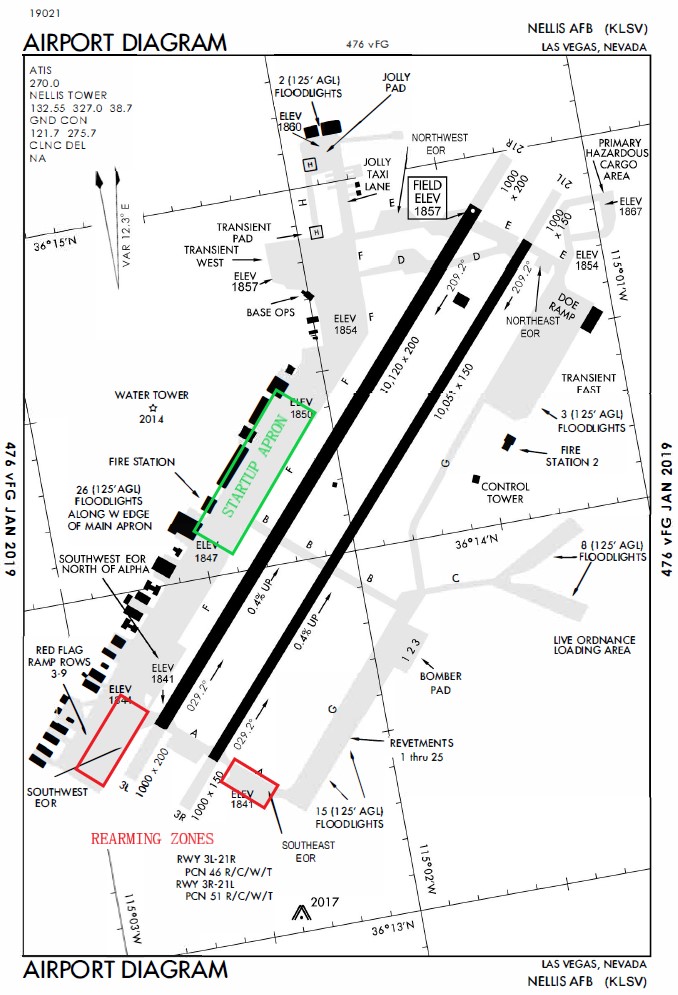
3. DEPARTURE
Once formations are cleared for departure they will enter and take off following VMC or IMC procedures depending on the Airfield weather conditions:
● VMC: NORTH FLEX / DREAM 6 departure in use. Take Off will be 1+1 at 10” spacing with visual rejoin when airborne. Once above 10200 FT / 20NM R349 LSV proceed to C3: AAR. This one will be exactly the same for all players in the package.
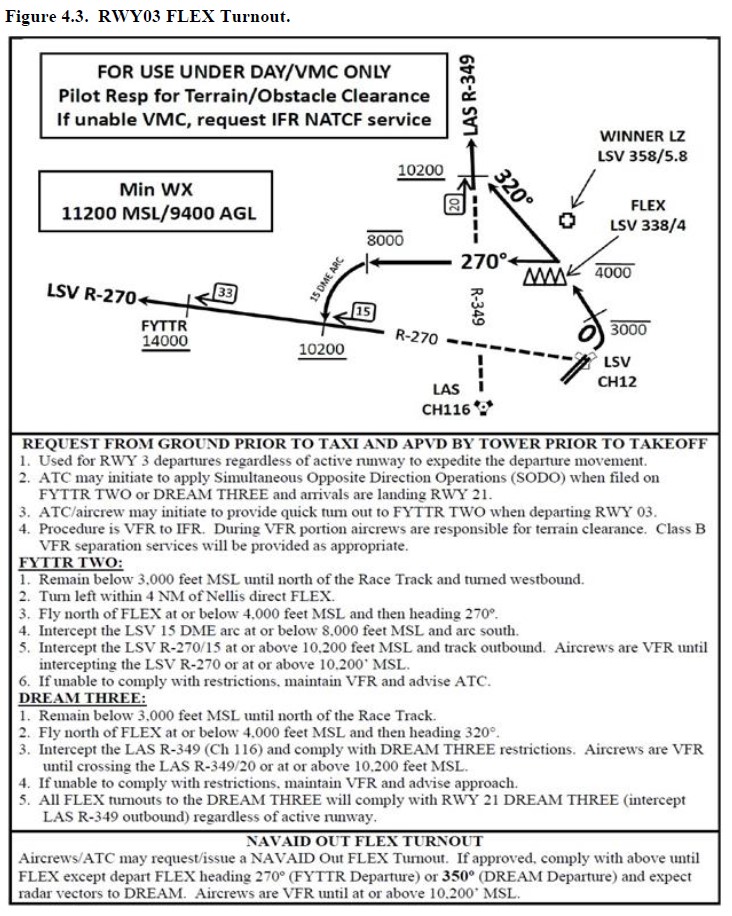
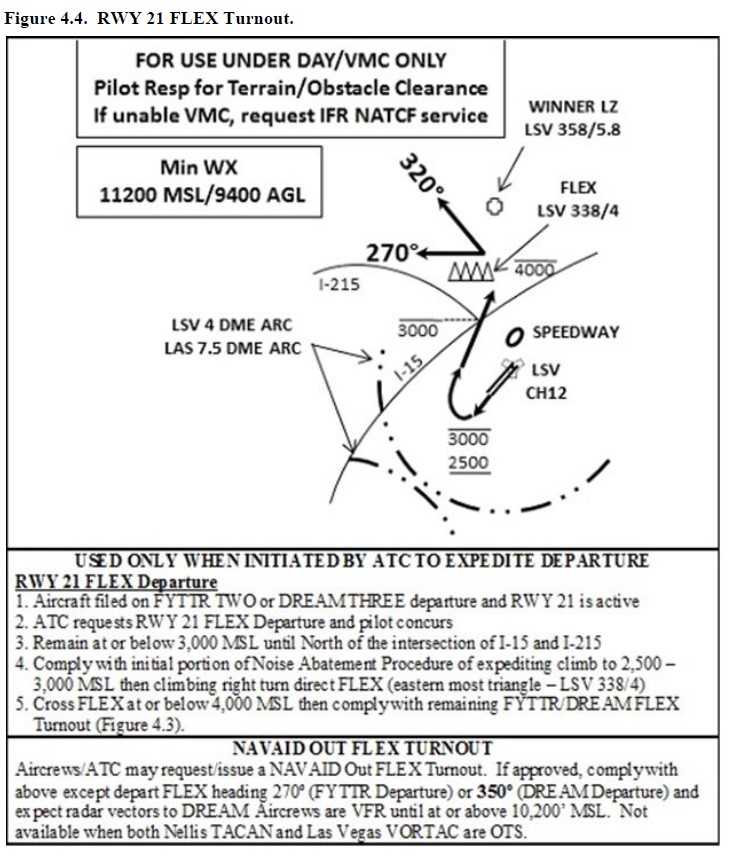
● IMC: DREAM 6 departure in use. Take Off will be 1+1 at 20” spacing. Wingman will maintain 2 NM trail formation till rejoin in VMC above clouds. Afterwards will proceed to first route waypoint. This one will be exactly the same for all players in the package.
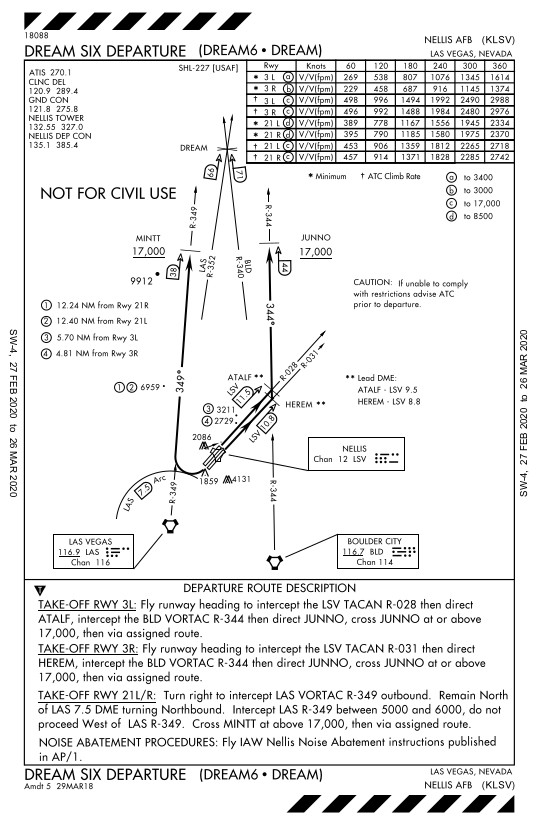
After Take Off, ATC controller will clear the formations to change to either the GCI tactical frequency (preset #6) or AAR frequency (see AAR appendix).
4. ROUTE
After departure all formations will proceed to waypoints A1: HEREM, B2: JUNNO and reaching C3:AAR at FL200 or below. These points are common WPTs for all participants. Waypoint C3 will be also ARCP for formations refueling in southern tanker (ARCO KC-135MPRS AAR SOUTH) , and northern tanker (TEXACO KC-135 NORTH). Once with visual contact with tanker, receivers with climb for rejoining and proceed echelon left with tanker.
After refueling, formations will proceed to the assigned Holding/Push WPT, normally WPT 4 (D4) HOLD and WPT 5 (E5) PUSH, at the assigned altitudes. On the way to the holding/push WPTs all formations with contact GCI controller for check-in and tactical flight.
MANDATORY CALL FOR ALL FORMATIONS one minute before reaching the holding/push point for SA. For instance: “Lobo, 1 minute to D4, maintaining FL230”.
Local Nellis QNH will be used in all NTTR ranges at all altitutes.
5. RECOVERY
On the way back and crossing FLOT heading home all formations will contact TWR in 327.000 UHF and will ask for weather, landing data and will request type of approach.
Landing approach will be done depending on Nellis AFB weather conditions:
VMC: RWY 03 or 21 in use.
- RWY 21: ARCOE recovery in use.
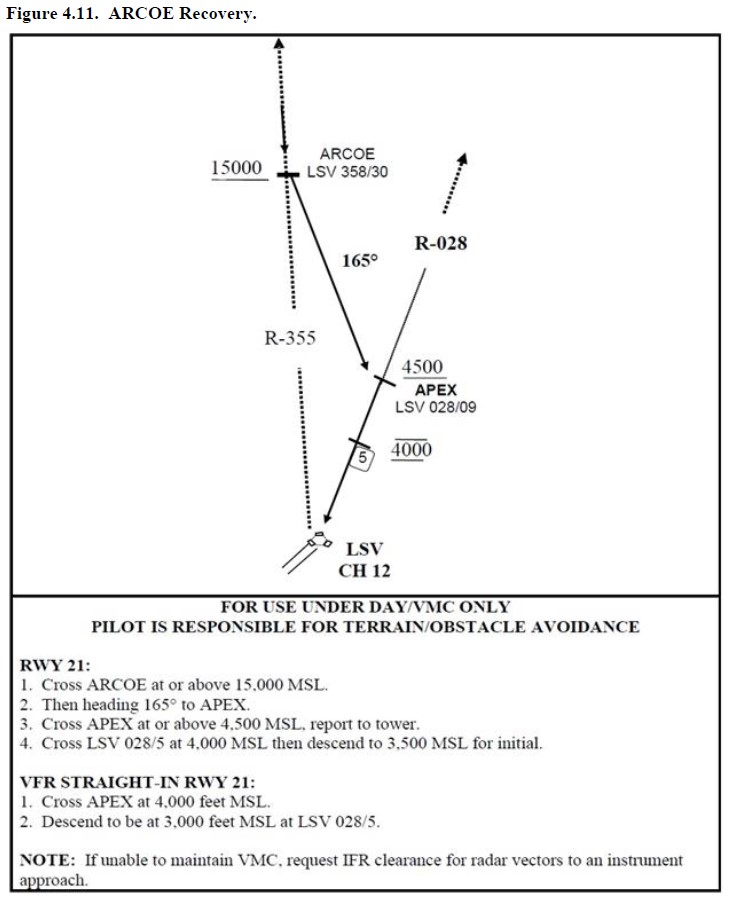
- RWY 03: STRYK recovery. Aircrews can proceed directly to GASS PK if ATC aproved.
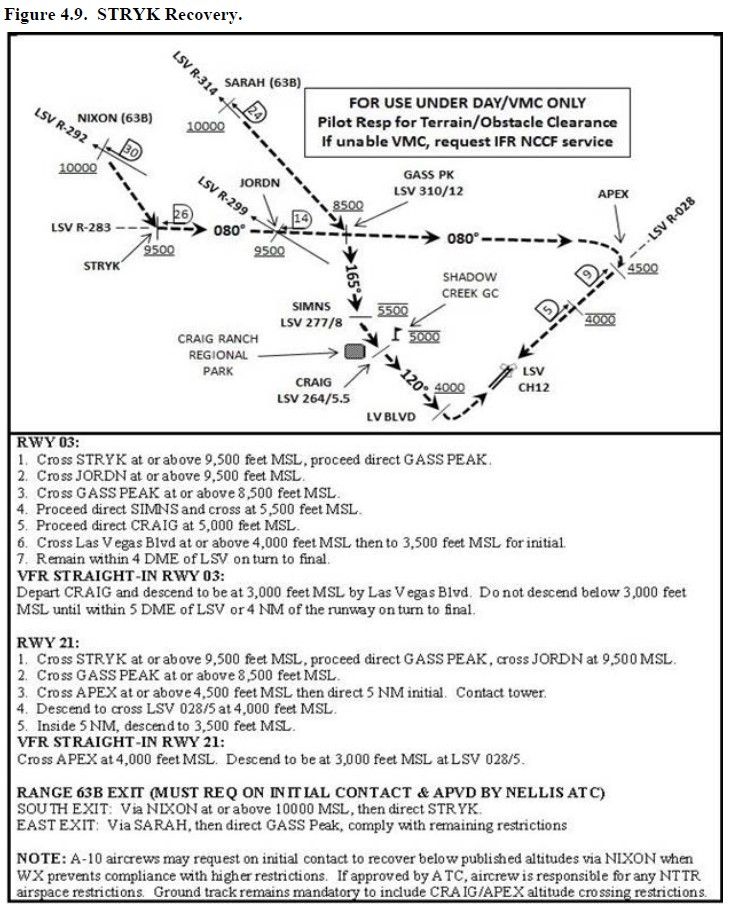
- Formations will ask for 360 military traffic pattern. They will break over the runway at 3,500 ft MSL.
IMC: RWY 21 in use.
-
During IMC or NIGHT (VMC or IMC), aircrews should expect vectors for ILS or TACAN approach to RWY 21.
-
RWY 21 is the preferred landing runway for IMC/Night recoveries. Night recoveries from the nellis Ranges should proceed to the IFR pickup point for the appropiate recovery and contact nellis control. North/Easthern recoveries will be via TEXAS LAKE. South/Western recoveris Will be via FLUSH. Expect ARCOE or KRYSS ILS approach. Flight Leads will be responsible of separation till to be under ATC control. If situation requires they can proceed MARSA (Military Assume Responsability for Separation of Aircraft), with previous formation.
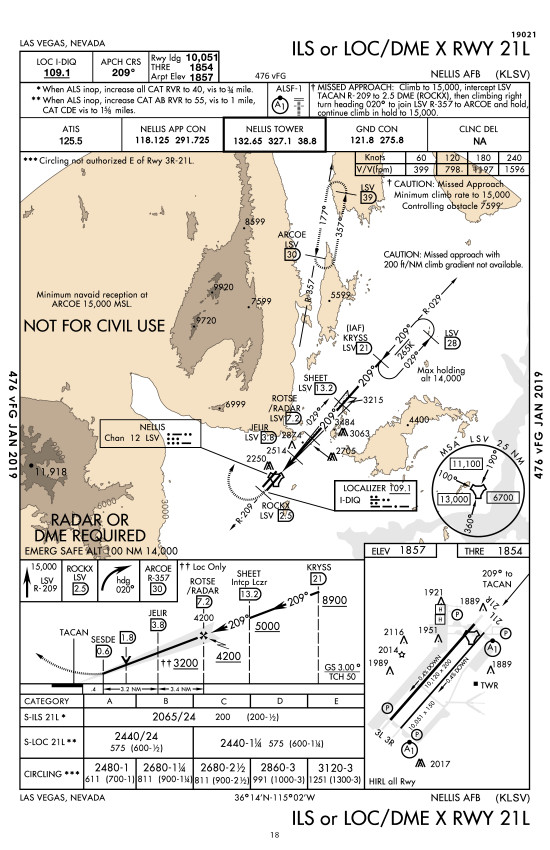
ALTERNATIVE.
- Alternative airbase for emergencies will be Groom Lake.
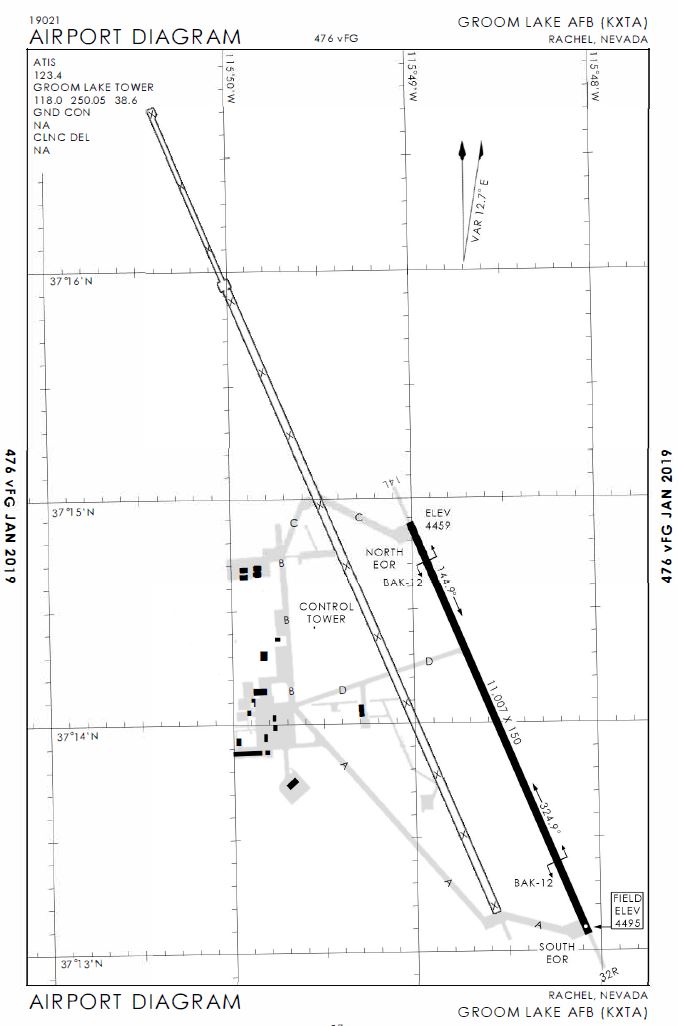
ANNEX A. AAR
Rejoining and communication procedure with tanker as described:
-
Drogue aircrafts will proceed to Southern tanker ARCO, PRESET #13.
-
Boom aircrafts will proceed to Northern tanker TEXACO, PRESET #14.
-
Each flight leader must pay attention to the comms in order to deconflict with other formations in the vecinities of the tanker.
-
Find and track our assigned tanker via TACAN and/or AA Radar. NEVER ask something to tanker up to this point. Rejoin and maintain echelon left formation with the tanker and the other previous formations in the queue as briefed.
-
Once we are next in the queue, we will request APPROACHING FOR REFUELING to the tanker. After refueling, each aircraft will proceed to right echelon with tanker and will end DCS procedure making call in DCS tanker menu, ABORT REFUEL.
This is an individual procedure that everybody must accomplish. Please maintain concentration up to this point and make correct calls.
ANNEX B. FREQUENCIES
Consult the Radio frequencies page.
ANNEX C. KNEEBOARD
Data cards for the kneeboard can be generated using our official GV5Js Datacard Generator app.
